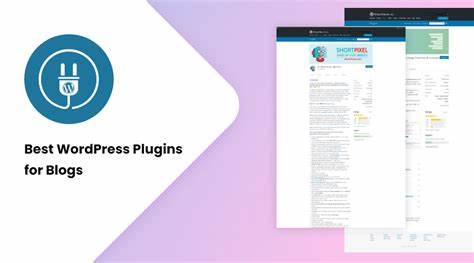Table of Contents

Introduction
WordPress MetaSlider, As a website owner, you know that the first impression your site makes is crucial to its success. One of the most effective ways to make a great first impression is through the use of a slider. Sliders allow you to display multiple images or messages in an engaging way, capturing the attention of your visitors and encouraging them to explore your site further. In this article, we’ll be discussing WordPress MetaSlider, one of the most popular slider plugins available for WordPress sites.
What is WordPress MetaSlider?
WordPress MetaSlider is a powerful and versatile plugin that allows you to create beautiful, responsive sliders for your website. With over 900,000 downloads and a 4.8-star rating on WordPress.org, it’s clear that MetaSlider is a trusted and reliable solution for website owners.
MetaSlider provides a simple and intuitive interface for creating and managing sliders. You can easily add new images or slides to your slider, customize the look and feel of your slider, and even add text, buttons, and links to each slide. You can also choose from a variety of transition effects, including fade, slide, and carousel, to create a slider that fits your unique style and design.
WordPress MetaSlider history
WordPress MetaSlider is a powerful plugin that has become an essential tool for website owners and developers. But how did it all start? In this article, we will take a look at the history of MetaSlider, how it has evolved over time, and the impact it has had on the WordPress community.
Early Development of WordPress MetaSlider
The development of MetaSlider began in 2013, when the plugin was created by the UK-based software company, UpdraftPlus. The initial version of the plugin was basic, with limited customization options, but it was quickly adopted by the WordPress community due to its ease of use and ability to create responsive sliders.
As the popularity of MetaSlider grew, the developers at UpdraftPlus began to add new features and functionality to the plugin. This included the addition of new slider types, such as Flex Slider and Nivo Slider, as well as more advanced customization options, such as the ability to add captions and links to individual slides.
The Emergence of Responsive Design
One of the key reasons for the success of MetaSlider has been its ability to adapt to changing web design trends. In the early 2010s, responsive design emerged as a new standard in web design, as website owners and developers began to recognize the importance of creating websites that could be viewed on a wide range of devices, from desktop computers to mobile phones.
MetaSlider was one of the first WordPress plugins to embrace responsive design, allowing users to create sliders that would automatically adjust to different screen sizes. This made it an ideal tool for website owners and developers who wanted to create a visually appealing website that would be accessible to a wide audience.
MetaSlider Today
Today, MetaSlider has grown to become one of the most popular slider plugins for WordPress, with over 900,000 active installations and an average rating of 4.6 stars out of 5 on the WordPress plugin repository. The plugin has continued to evolve, with new features and functionality being added on a regular basis.
Some of the key features of MetaSlider today include:

- Multiple Slider Types: MetaSlider now supports multiple slider types, including Flex Slider, Nivo Slider, and Responsive Slider.
- Advanced Customization: Users can now customize their sliders with a wide range of options, including different transition effects, slide speeds, captions, and links.
- SEO Optimization: MetaSlider has been designed with SEO in mind, allowing users to optimize their sliders for search engines by adding alt tags, titles, and descriptions to their slider images.
Why Use WordPress MetaSlider?
There are many reasons why you might want to use WordPress MetaSlider on your website. Here are just a few of the benefits that come with using this popular plugin:
- Improved Visual Appeal: Sliders are a visually engaging way to display content on your website, capturing the attention of your visitors and encouraging them to explore further. MetaSlider allows you to create sliders that are both beautiful and functional, making your website stand out from the competition.
- Responsive Design: With more and more people accessing the internet through mobile devices, it’s essential that your website is responsive and mobile-friendly. MetaSlider ensures that your sliders look great on any device, adapting to the screen size and orientation of your visitors.
- SEO Optimization: By optimizing your images and ensuring that they are properly sized and compressed, you can improve the load time of your website and boost your search engine rankings. MetaSlider makes it easy to optimize your images for SEO, ensuring that your website loads quickly and efficiently.
- Customization Options: With MetaSlider, you have complete control over the look and feel of your sliders. You can choose from a variety of transition effects, add text and links to your slides, and even customize the CSS and HTML of your slider to fit your unique design.
How to Use WordPress MetaSlider
Using WordPress MetaSlider is simple and straightforward, even if you’re not a tech-savvy person. Here’s a step-by-step guide on how to use the plugin:
Step 1: Install and Activate the Plugin
To use MetaSlider, you’ll need to install and activate the plugin on your WordPress website. To do this, go to your WordPress dashboard, navigate to the “Plugins” section, and click on “Add New.” Search for “MetaSlider,” and click “Install Now.” Once the plugin is installed, click “Activate” to activate the plugin on your website.
Step 2: Create a New Slider
To create a new slider, go to the MetaSlider section in your WordPress dashboard and click “Create Slider.” You can then choose the type of slider you want to create (Flex Slider, Nivo Slider, or Responsive Slider), and give your slider a name.
Step 3: Add Images to Your Slider
Once you’ve created a new slider, it’s time to add images to it. To do this, click on the “Add Slide” button in your slider settings. You can then choose to upload images from your computer or select images from your WordPress media library. You can add as many images as you like to your slider.
Step 4: Customize Your Slider
Once you’ve added images to your slider, you can customize it by adjusting the settings in the “Slider Settings” tab. Here, you can choose the transition effect for your slider, set the slide speed, and adjust other settings such as the caption font, size, and color. You can also add text, links, and buttons to your slides by clicking on the “Slide Info” tab.
Step 5: Publish Your Slider
Once you’re happy with your slider, click on the “Publish” button to make it live on your website. You can then add your slider to a post or page on your website by using the MetaSlider shortcode, which you can find in the “Shortcode” tab.
Tips for Using WordPress MetaSlider
Here are some additional tips to help you get the most out of WordPress MetaSlider:
- Choose High-Quality Images: The quality of the images you use in your slider can make a big difference in how your website looks and performs. Make sure you use high-quality, optimized images that are appropriately sized for your slider.
- Use SEO Best Practices: To improve your website’s SEO, be sure to optimize your slider images by using descriptive file names, alt tags, and captions. You should also compress your images to reduce their file size and improve load times.
- Test Your Slider: It’s important to test your slider on different devices and screen sizes to ensure that it looks and functions as intended. This will help you identify any issues and make adjustments as needed.
- Consider A/B Testing: A/B testing is a great way to determine which slider settings and designs work best for your website. Try testing different transition effects, slide speeds, and captions to see which ones perform best with your audience.
Conclusion

WordPress MetaSlider is an essential plugin for any website owner looking to improve the visual appeal of their website. With its user-friendly interface, customization options, and SEO optimization features, MetaSlider makes it easy to create and manage beautiful, responsive sliders that will capture the attention of your visitors and encourage them to explore your site further. By following the tips and best practices outlined in this guide, you can use WordPress MetaSlider to take your website to the next level.
The development of WordPress MetaSlider is a story of innovation, adaptability, and user-focused design. What began as a basic plugin has grown into a sophisticated tool that has helped website owners and developers create beautiful, responsive sliders that capture the attention of their audiences.
As the web continues to evolve, it is likely that MetaSlider will continue to adapt, adding new features and functionality to meet the needs of its users. Whether you are a beginner or an experienced WordPress user, MetaSlider is a plugin that is worth exploring for its ease of use, versatility, and the many ways it can help improve your website’s design and performance.


